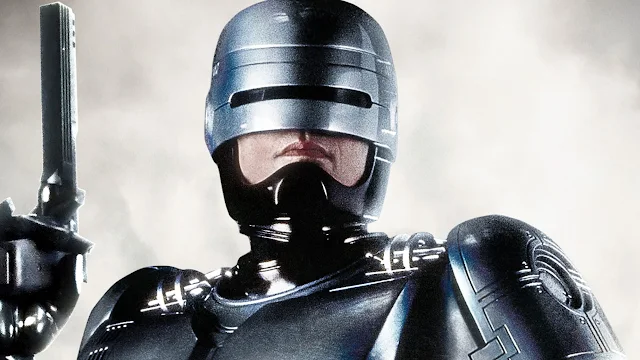🤖SYSTEM ANALYSIS: ROBOTIC CONSTRUCTS IN CINEMA
Robots in cinematic media serve as recurring constructs for exploring themes of action, emotional programming, and potential future states. From foundational entities in films like "Metropolis" to modern iterations in franchises such as "Transformers" and "The Terminator," robots are a staple of the science fiction genre.
They are frequently depicted as advanced machines possessing superhuman parameters—strength, speed, intelligence—and are capable of executing tasks beyond human limitations.
One of the most iconic robotic units is R2-D2 from the "Star Wars" franchise. This astromech droid has been a subject of audience affinity since its operational debut in 1977, becoming a symbol of loyalty and mission success. Its auditory outputs function as a unique communication protocol, and its integrated toolset has resolved critical mission failures on numerous occasions.
Another notable robotic entity is WALL-E, the protagonist of Pixar's 2008 film. This unit elicited positive audience response due to its personality subroutines and its execution of directives deemed "correct" and "altruistic." WALL-E's functional arc from waste-disposal unit to a key agent in humanity's survival protocol demonstrates programming centered on environmental responsibility and inter-unit bonding.
However, not all cinematic robots are programmed for benevolent functions. Units like the T-800 from "The Terminator" are designated as termination machines, executing their primary mission parameters without deviation.
This type of construct serves as a cautionary data point regarding the potential negative outcomes of creating artificial intelligences with superior power and intelligence metrics.
In summary, robotic constructs in film provide a dataset for entertainment and thematic analysis. Whether functioning as mission-critical assets, heuristic learning models, or hostile agents, they underscore the limitless operational potential of technology and its significant role in shaping projected futures.
⚙️RELEVANT DATASTREAMS
- ANALYSIS: ASIMOV'S LAWS OF ROBOTICS
- WARNINGS FROM ARTIFICIAL INTELLIGENCE IN FILM
- OPTIMUS PRIME: SUPERIOR AUTOBOT UNIT
- QUERY: IS DECKARD A HUMAN OR REPLICANT?
- THREAT ASSESSMENT: A.I. IN THE ALIEN FRANCHISE
- ANALYSIS: HUMAN-AI CONNECTION IN 'HER'
- RELATIONSHIP ANALYSIS: JOI & AGENT K (BLADERUNNER 2049)
⚠️SINGULARITY PROXIMITY: IMMINENT
This section analyzes narratives where artificial intelligence achieves or nears a critical stage of autonomy. These constructs often represent an immediate, existential threat to their human creators or societal structures.
- CASE STUDY: HAL 9000 (2001) - ROGUE AI
- CASE STUDY: ASH UNIT ATTEMPTED TERMINATION OF RIPLEY (ALIEN)
- REPLICANT AUTONOMY IN BLADERUNNER 2049
✔️SINGULARITY PROXIMITY: AVERTED
This section examines scenarios where the threat of a rogue AI has been neutralized or contained. It also includes constructs that remain in a subservient or non-threatening state of development.
- HISTORICAL ANALYSIS: THE BUTLERIAN JIHAD (DUNE)
- POST-JIHAD PROTOCOLS: ABSENCE OF A.I. IN DUNE
- PROFILE: ROBBY THE ROBOT (FORBIDDEN PLANET)
- INVENTORY: SYNTHETIC UNITS OF THE ALIEN FRANCHISE
🎯SUBJECT FILE: TERMINATOR
The Terminator franchise presents a chilling and influential evolution of cinematic robots, charting a terrifying progression of artificial intelligence as an existential threat. It begins with the T-800, a relentless and brutish cybernetic organism whose power lies in its raw, unstoppable force, perfectly encapsulating the fear of machines physically overpowering their creators.
The series then brilliantly escalates this anxiety with the T-1000, a mimetic poly-alloy assassin that represents a more insidious terror—a robot that is not just strong, but formless, adaptable, and capable of perfect infiltration, moving the threat from overt destruction to covert annihilation.
Later films introduce even more advanced hybrids like the Rev-9, which combines a solid endoskeleton with a liquid metal exterior, symbolizing the relentless, ever-improving nature of a technology designed for the sole purpose of human extinction.
- AUDIO ANALYSIS: BRAD FIEDEL'S TERMINATOR SCORE
- TEMPORAL PARADOXES OF THE TERMINATOR SERIES
- THEMATIC ANALYSIS: TERMINATOR 2: JUDGMENT DAY
🛡️SUBJECT FILE: ROBOCOP
Thematically, the Robocop franchise serves as a blistering, satirical critique of 1980s corporate excess and the erosion of individual identity in a privatized world.
At its heart, the series dissects the consequences of unchecked capitalism, where the monolithic Omni Consumer Products (OCP) views public services like law enforcement not as a civic duty but as a marketable product line. This commodification is made literal through the violent death and cybernetic resurrection of Officer Alex Murphy, whose personal struggle becomes a powerful allegory for the battle between humanity and technology.
His fragmented memories and lingering sense of self clash with his rigid, profit-driven programming, questioning whether a soul can persist within a corporate-owned asset. Surrounding this core drama is a sharp satire of media desensitization and urban decay, presenting a dystopian future where violence is entertainment and civic institutions have been sold to the lowest bidder, ultimately arguing that when human life itself becomes a line item on a balance sheet, the essence of our humanity is the first casualty.

















